Submitted:
31 July 2023
Posted:
02 August 2023
You are already at the latest version
Abstract
Keywords:
1. Introduction
2. Materials and Methods
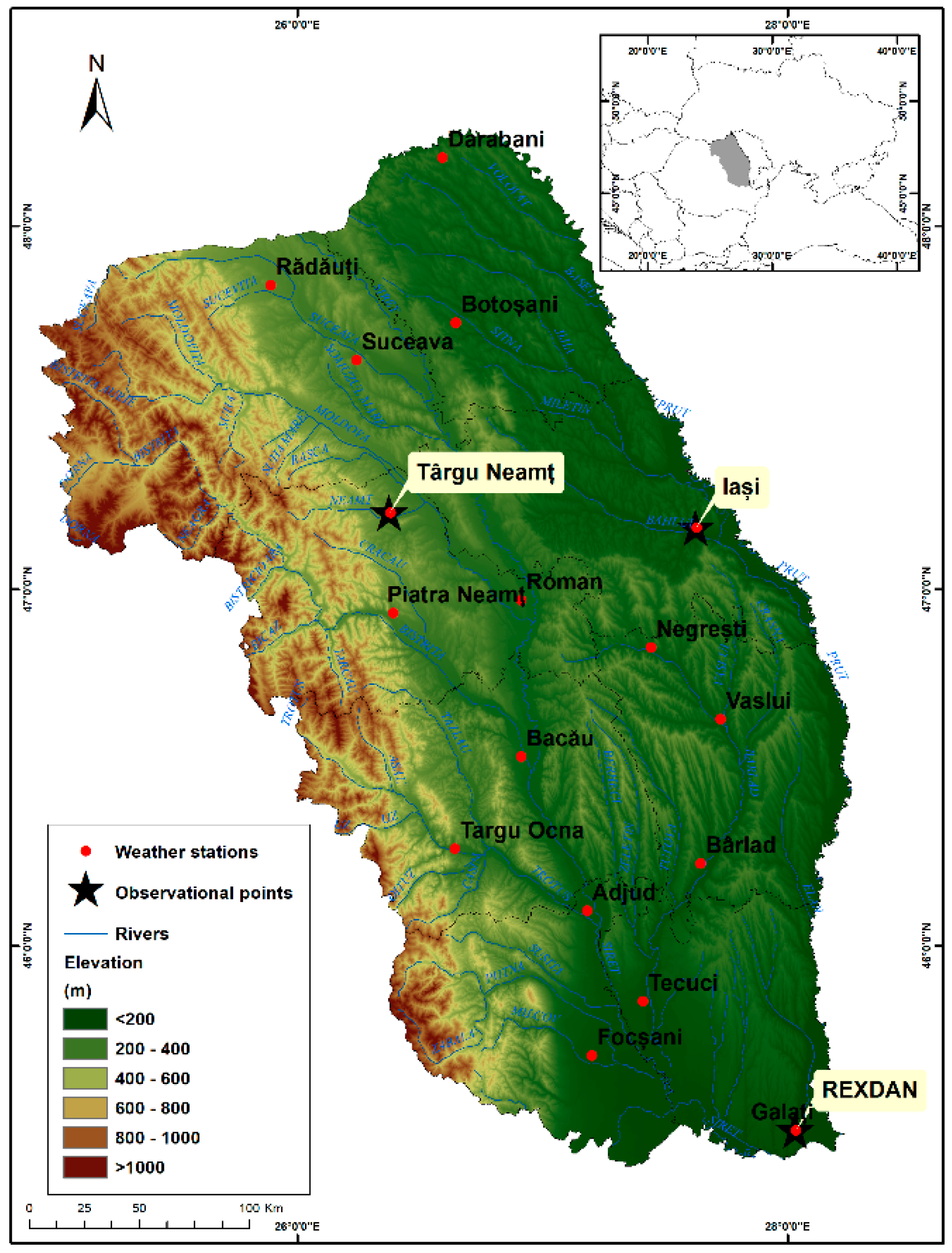
3. Mesoscale Context
3.1. Ground Level
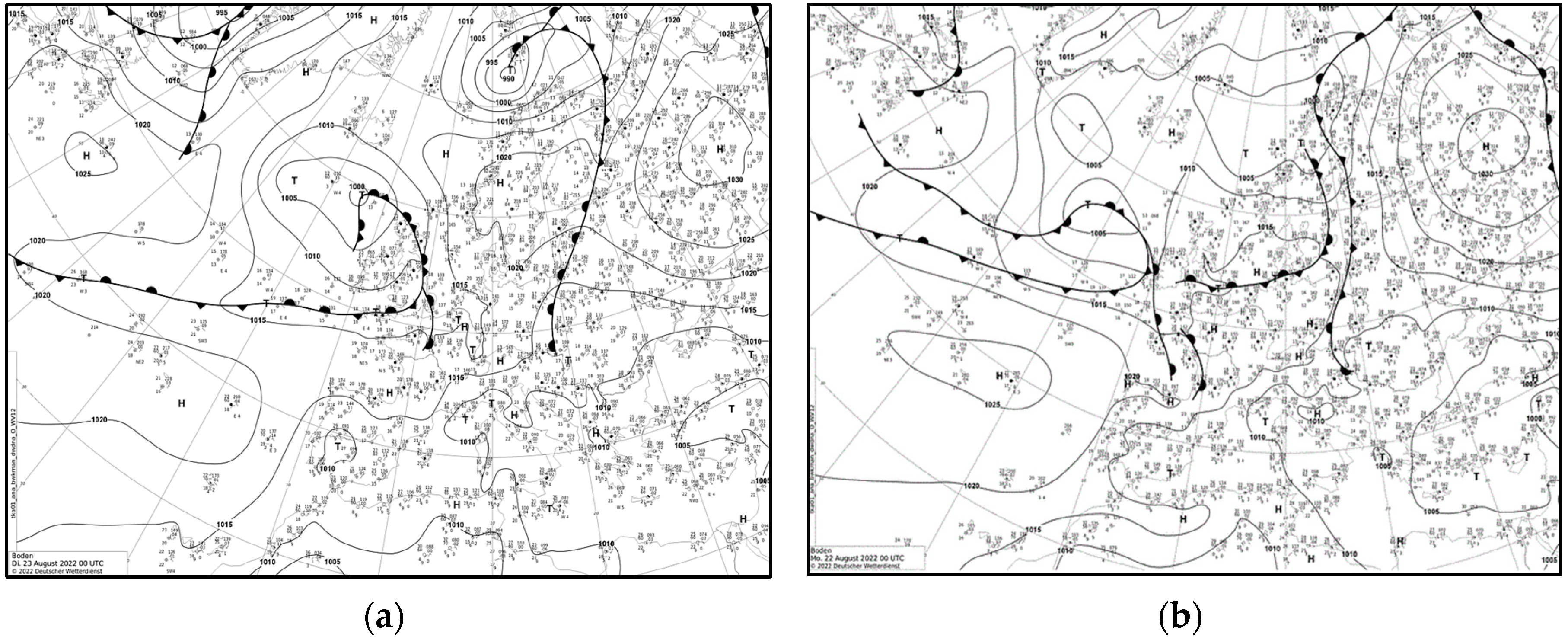
3.2. Middle Troposphere and 850 hPa Level
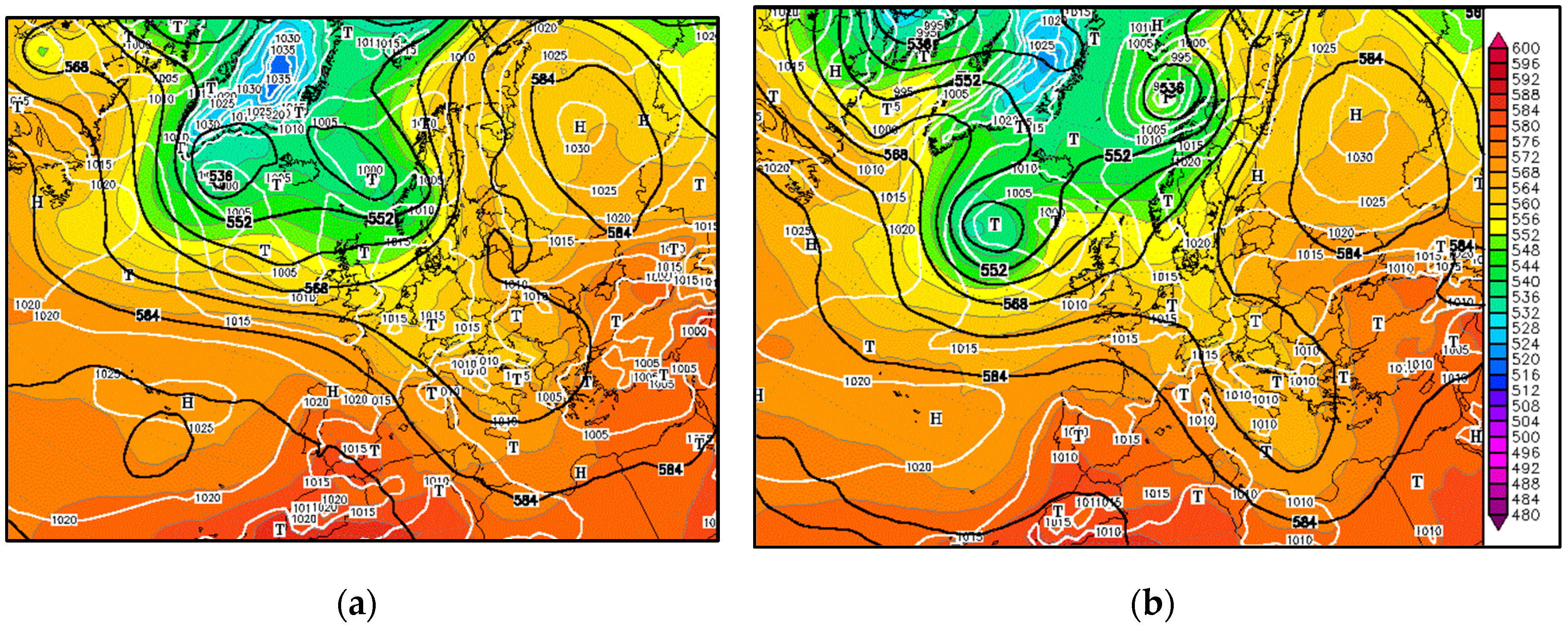
3.3. Streamlines and Wind Direction
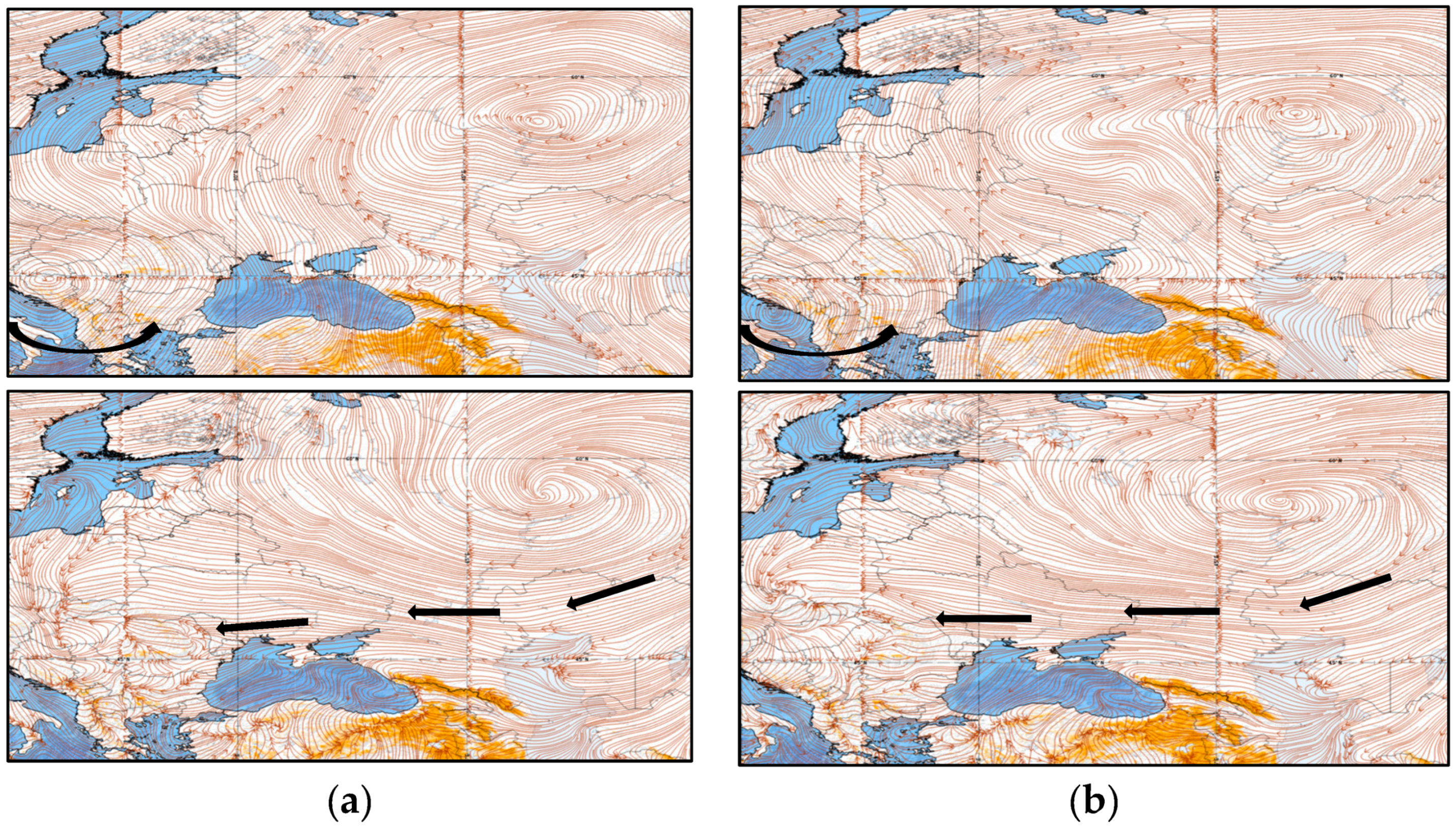
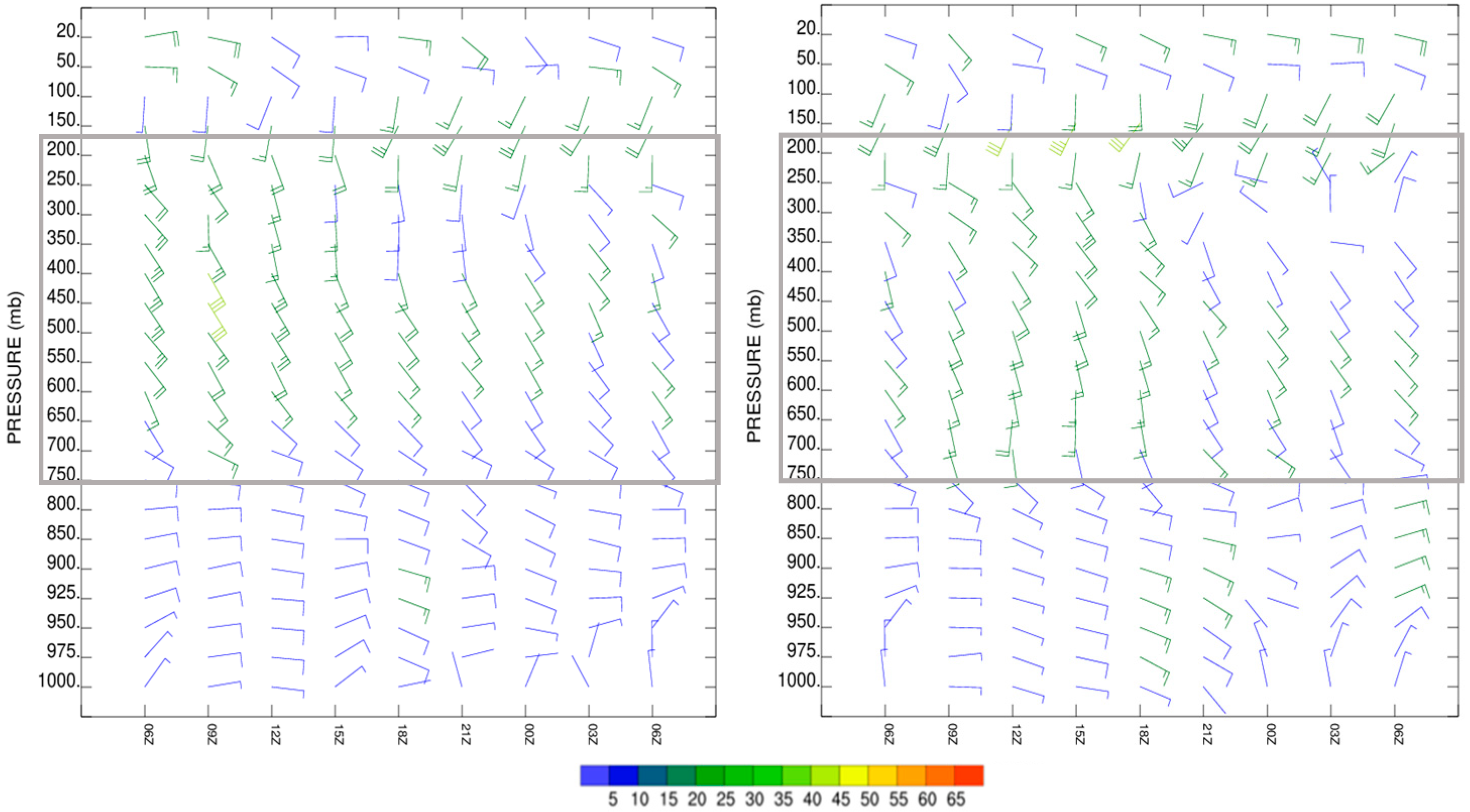
4. Dust Event Analysis
4.1. Analysis of MODIS Satellite Images
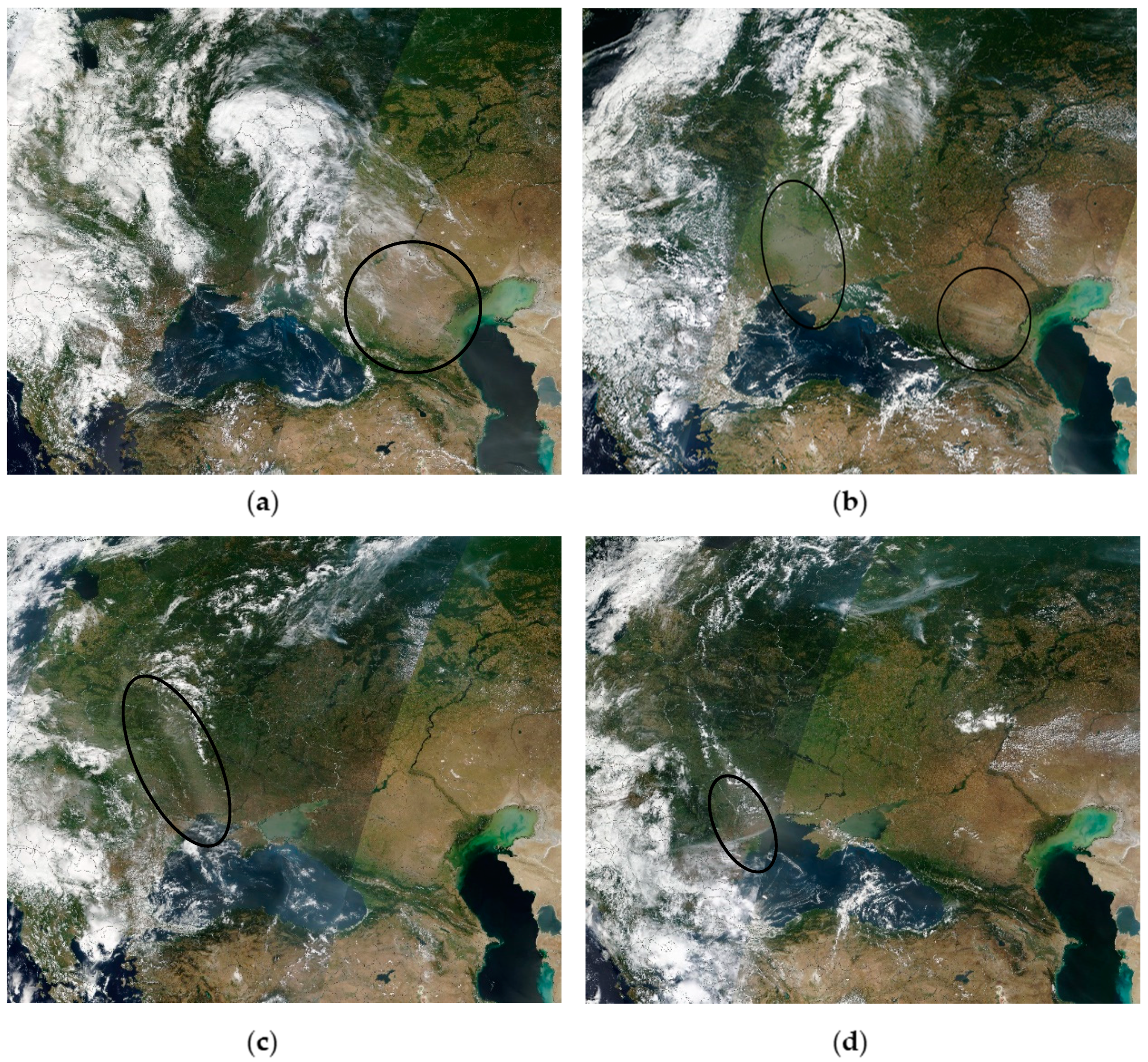
4.2. Analysis of Forecast Models and Reanalysis Data
4.2.1. MERRA Data
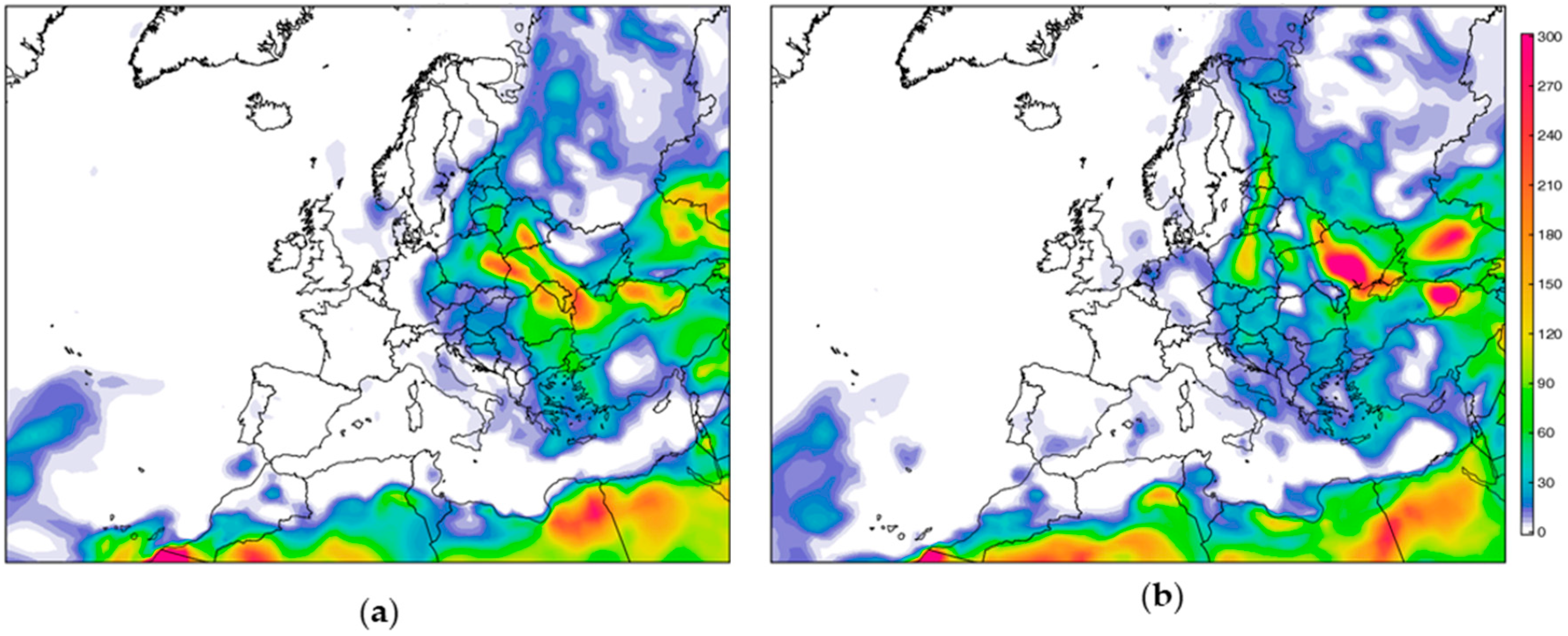
4.2.2. European Ensemble Model
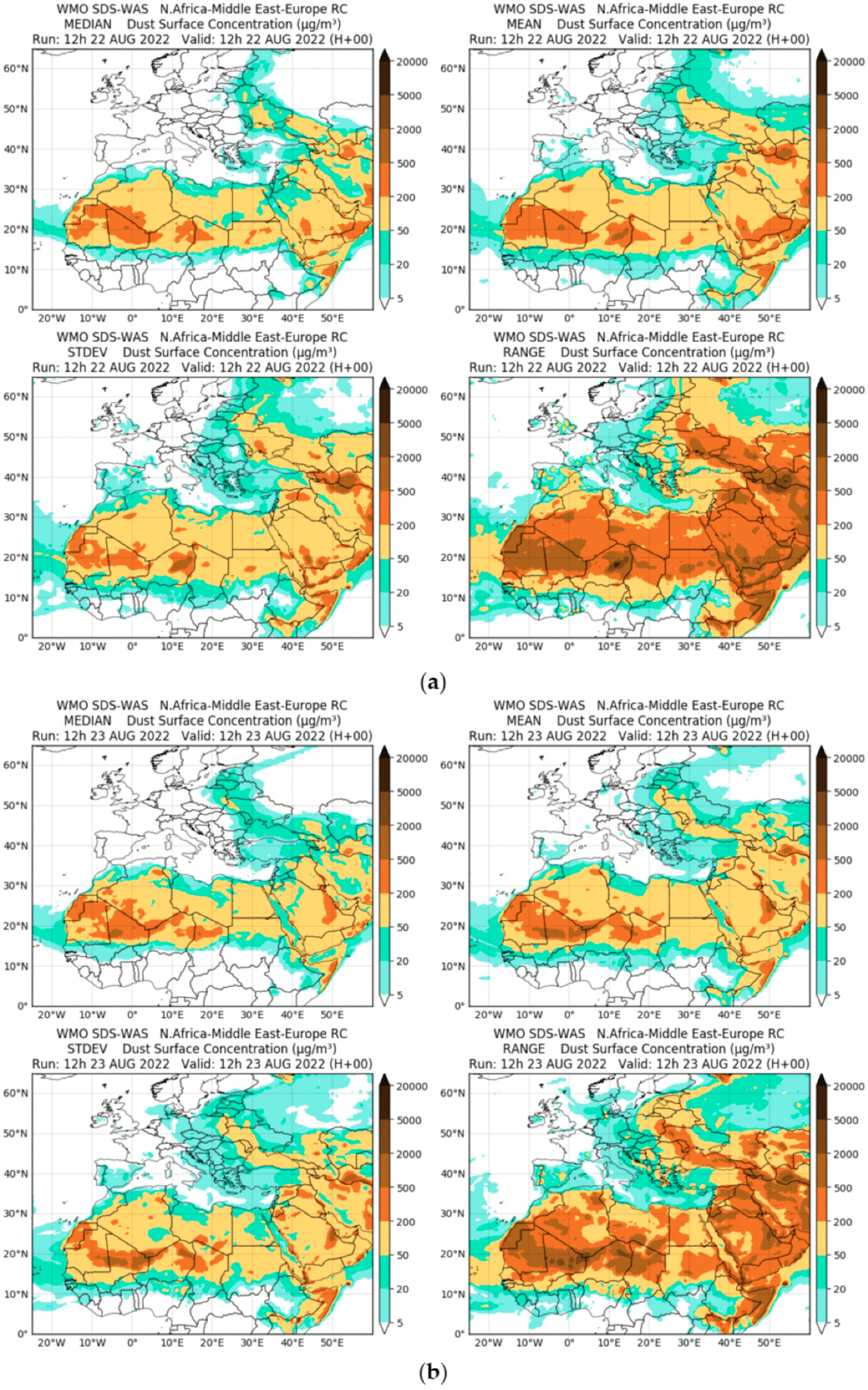
4.3. Backward Trajectories Analysis
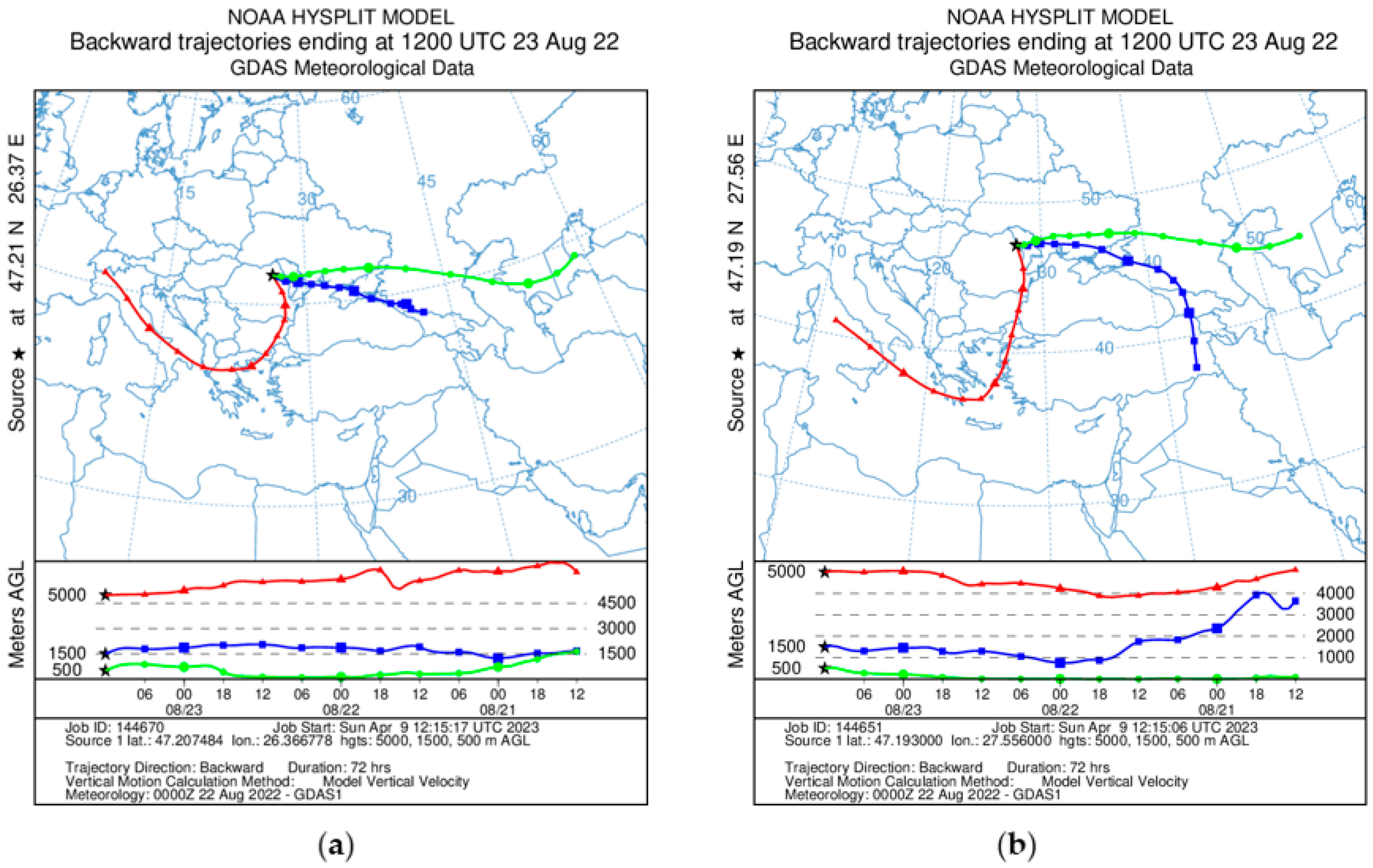
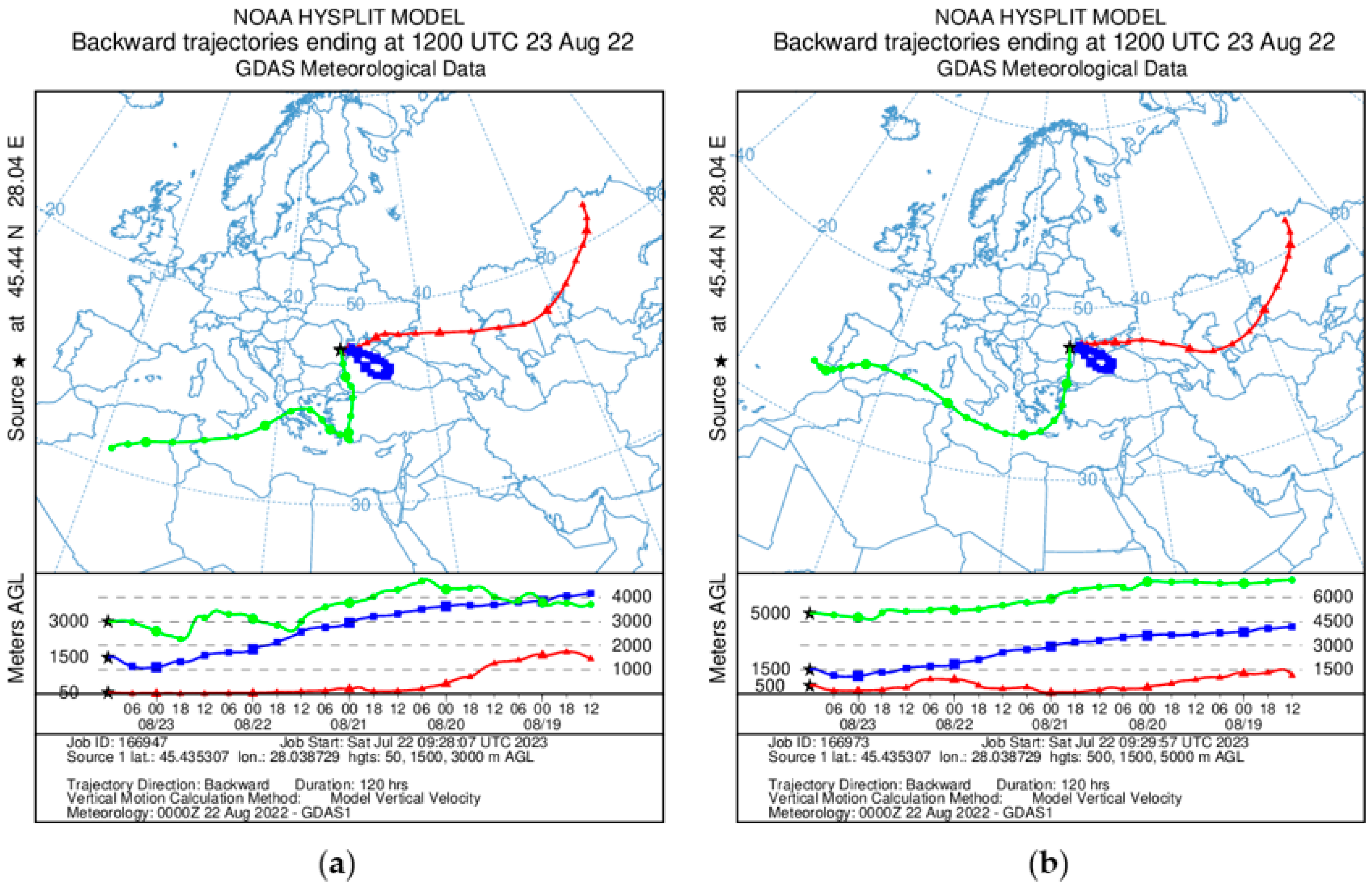
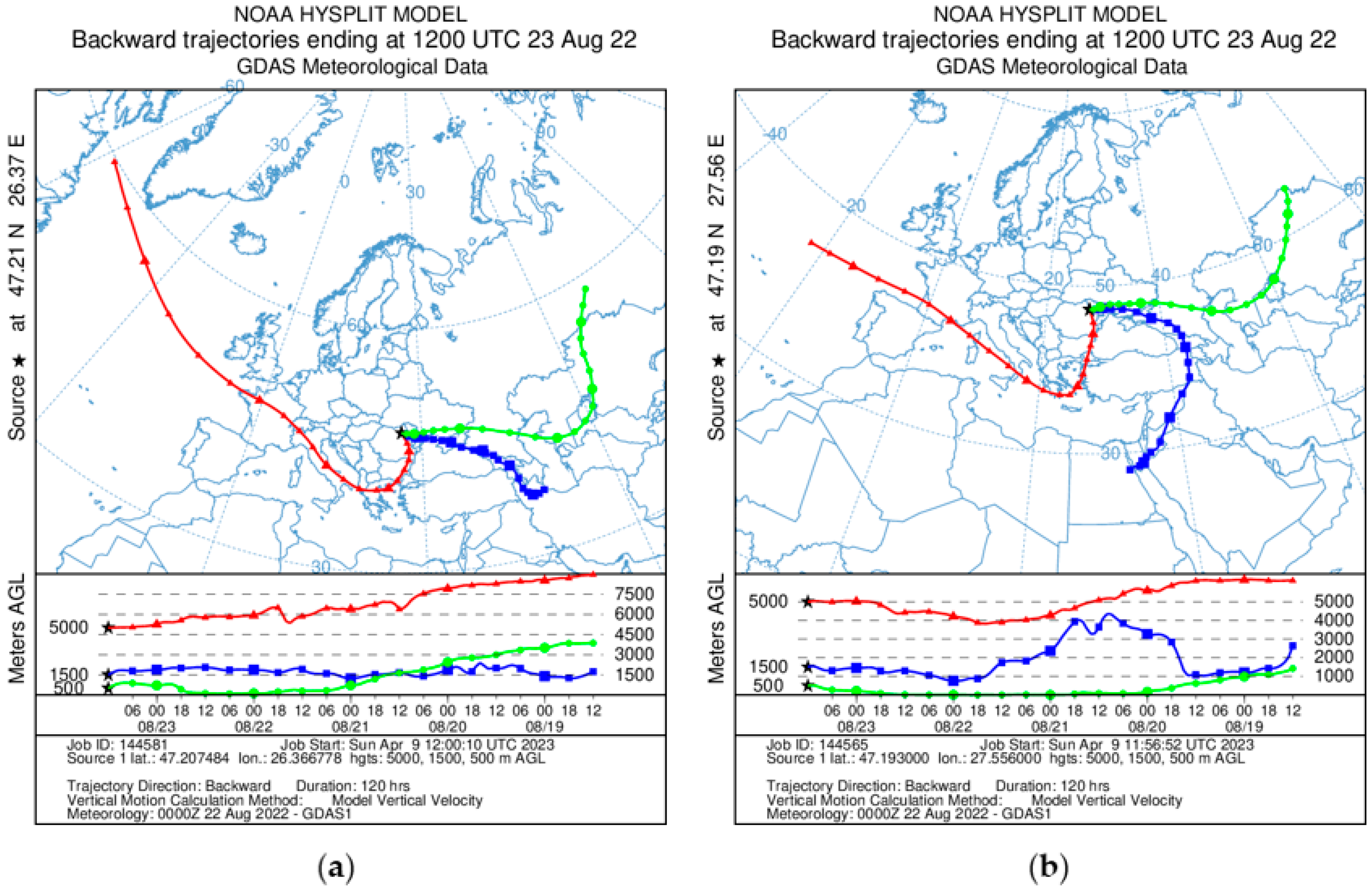
4.4. Air Quality Analysis




4.5. Dust Event from AERONET—Observations
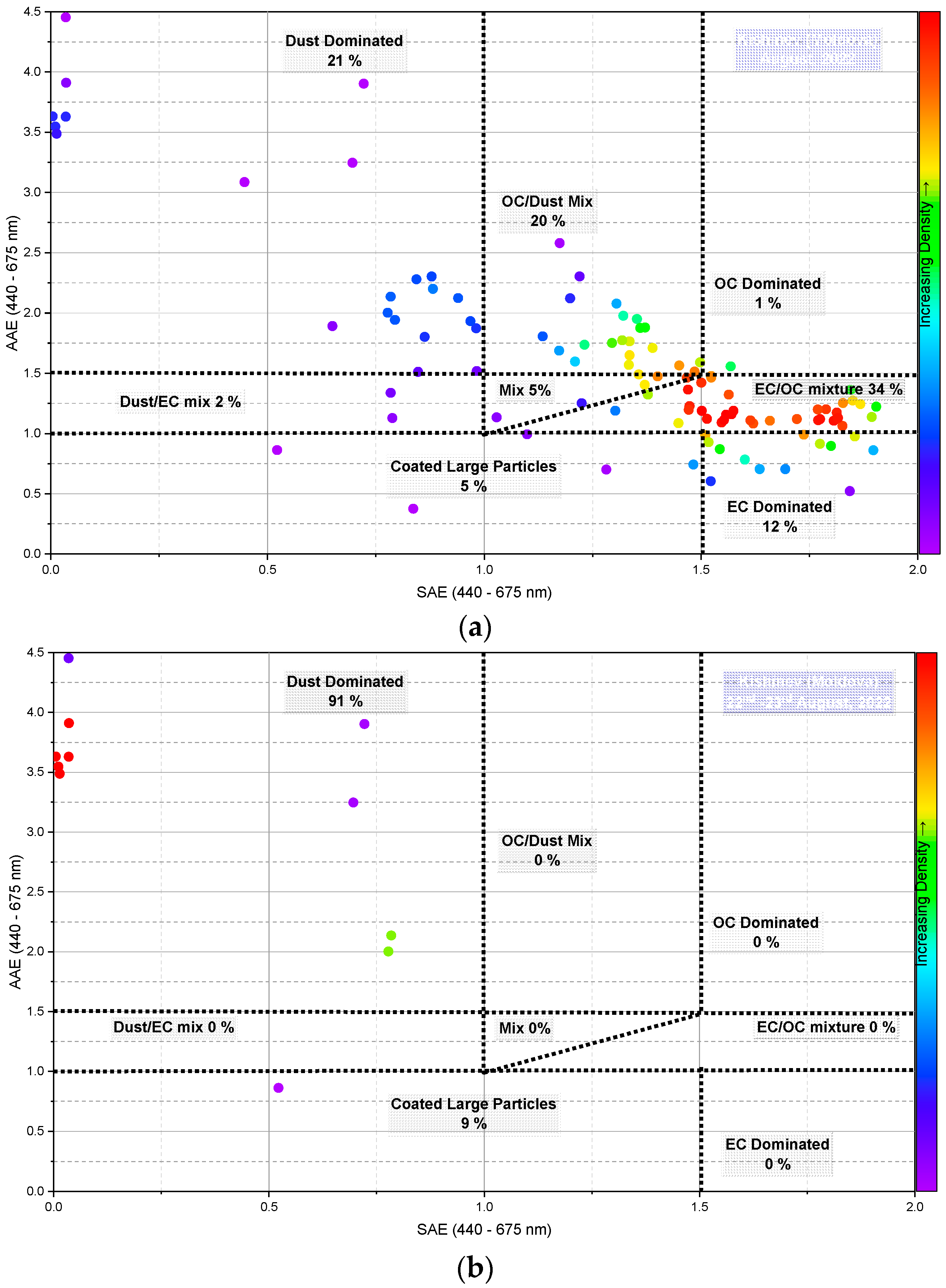
4.6. Radar and Ceilometer Data
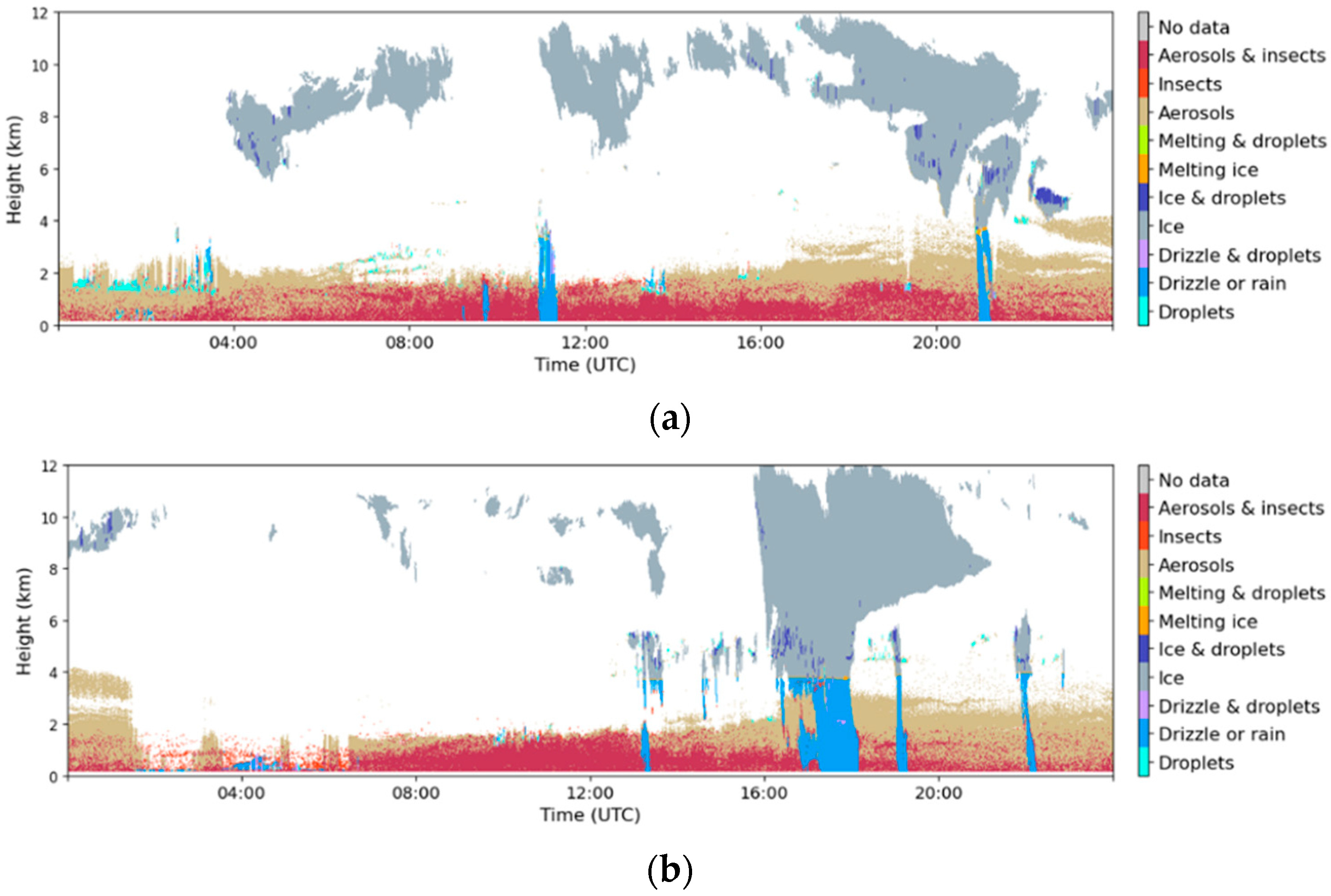
5. Conclusion
Author Contributions
Data Availability Statement
Acknowledgments
References
- Euronews Available online: https://www.euronews.com/my-europe/2022/08/10/europes-drought-could-be-the-worst-in-500-years-warns-researcher (accessed on 29.03.2023).
- Dedova, E.B., Goldvarg, B.A. & Tsagan-Mandzhiev, N.L., Land Degradation of the Republic of Kalmykia:Problems and Reclamation Methods. Arid Ecosyst 10, 140–147, 2020. [CrossRef]
- Di Mauro, B., Garzonio, R., Rossini, M., Filippa, G., Pogliotti, P., Galvagno, M., Morra di Cella, U., Migliavacca, M., Baccolo, G., Clemenza, M., Delmonte, B., Maggi, V., Dumont, M., Tuzet, F., Lafaysse, M., Morin, S., Cremonese, E., and Colombo, R., Saharan dust events in the European Alps: role in snowmelt and geochemical characterization, The Cryosphere, 13, 1147–1165, 2019. [CrossRef]
- Weger, M., Heinold, B., Engler, C., Schumann, U., Seifert, A., Fößig, R., Voigt, C., Baars, H., Blahak, U., Borrmann, S., Hoose, C., Kaufmann, S., Krämer, M., Seifert, P., Senf, F., Schneider, J., and Tegen, I., The impact of mineral dust on cloud formation during the Saharan dust event in April 2014 over Europe, Atmos. Chem. Phys., 18, 17545–17572, 2018. [CrossRef]
- Pérez, C., Nickovic, S., Baldasano, J. M., Sicard, M., Rocadenbosch, F., Cachorro, V. E., A long Saharan dust event over the western Mediterranean: Lidar, Sun photometer observations, and regional dust modeling, 2006. [CrossRef]
- Israelevich, P., Ganor, E., Alpert, P., Kishcha, P., and Stupp, A., Predominant transport paths of Saharan dust over the Mediterranean Sea to Europe, J. Geophys. Res., 117, 2012. [CrossRef]
- Tositti, L., Brattich, E., Cassardo, C., Morozzi, P., Bracci, A., Marinoni, A., Di Sabatino, S., Porcù, F., and Zappi, A., Development and evolution of an anomalous Asian dust event across Europe in March 2020, Atmos. Chem. Phys., 22, 4047–4073, 2022. [CrossRef]
- Prospero, J. M., Ginoux, P., Torres, O., Nicholson, S. E., and Gill, T. E., Environmental characterization of global sources of atmospheric soil dust identified with the nimbus 7 total ozone mapping spectrometer (toms) absorbing aerosol product, rev. geophys., 40 ( 1), 1002, 2002. [CrossRef]
- Hakki Baltaci, Meteorological characteristics of dust storm events in Turkey, Aeolian Research, vol. 50, 2021, 100673. [CrossRef]
- Ashrafi K, Shafiepour-Motlagh M, Aslemand A, Ghader S., Dust storm simulation over Iran using HYSPLIT. J Environ Health Sci Eng. 2014 Jan 7;12(1):9. [CrossRef]
- McGregor, G.R., Bamzelis, D. Synoptic typing and its application to the investigation of weather air pollution relationships, Birmingham, United Kingdom. Theor Appl Climatol 51, 223–236, 1995. [CrossRef]
- Barkan, J., Alpert, P., Kutiel, H., and Kishcha, P. Synoptics of dust transportation days from Africa toward Italy and central Europe, J. Geophys. Res., 110, 2005. [CrossRef]
- MODIS Moderste Resolution Imaging Spectroradiometer. Available online: https://modis.gsfc.nasa.gov/about/design.php. (accessed on 30.03.2023).
- Zheng Cao, Chapter 9 - Assessment methods for air pollution exposure, Editor(s): Lixin Li, Xiaolu Zhou, Weitian Tong, Spatiotemporal Analysis of Air Pollution and Its Application in Public Health, Elsevier, p. 197-206, 2020.
- 15. Digi24. Available online: https://www.digi24.ro/stiri/actualitate/social/anm-anunta-mase-de-aer-cu-particule-de-praf-saharian-in-mai-multe-zone-din-romania-2059553. (accessed on 05.04.2023).
- NOAA Air Resources Laboratory. Available online: https://www.ready.noaa.gov/HYSPLIT.php. (accessed on 05.04.2023).
- Apetroaie, C., Bostan, D.C., Timofte, A., Cazacu, M.M., Bostan, S., Usage of Atmospheric Sounding to Characterize the Meteorological Events on the Night of 23/24 August 2022, Bulletin of the Polytechnic Institute of Iași, Mathematics. Theoretical Mechanics. Physics Section 68(72) (2):33-62, 2022.
- Rosu, A., Constantin, D., O’Connor, E., and Voiculescu, M. "Categorize data from Galați on 23 July 2022", ACTRIS Cloud remote sensing data centre unit (CLU), https://cloudnet.fmi.fi/file/1e668f92-68de-48e9-ba6b-6eabe9b698db, 2022. (accessed on 16.04.2023).
- Cazorla, A.; Bahadur, R.; Suski, K.J.; Cahill, J.F.; Chand, D.; Schmid, B.; Ramanathan, V.; Prather, K.A., Relating aerosol absorption due to soot, organic carbon, and dust to emission sources determined from in-situ chemical measurements. Atmos. Chem. Phys. 2013, 13, 9337–9350. [CrossRef]
- Dubovik, O.; Holben, B.; Eck, T.F.; Smirnov, A.; Kaufman, Y.J.; King, M.D.; Tanré, D.; Slutsker, I. Variability of Absorption and Optical Properties of Key Aerosol Types Observed inWorldwide Locations. J Atmos. Sci. 2002, 59, 590–608. [CrossRef]
- Giles, D.M.; Sinyuk, A.; Sorokin, M.G.; Schafer, J.S.; Smirnov, A.; Slutsker, I.; Eck, T.F.; Holben, B.N.; Lewis, J.R.; Campbell, J.R.; et al. Advancements in the Aerosol Robotic Network (AERONET) Version 3 database - Automated near-real-time quality control algorithm with improved cloud screening for Sun photometer aerosol optical depth (AOD) measurements. Atmos. Meas. Tech. 2019, 12, 169–209. [CrossRef]
- Russell, P.B.; Bergstrom, R.W.; Shinozuka, Y.; Clarke, A.D.; DeCarlo, P.F.; Jimenez, J.L.; Livingston, J.M.; Redemann, J.; Holben, B.; Dubovik, O.; et al. Absorption Angstrom Exponent in AERONET and related data as an indicator of aerosol composition. Atmos. Chem. Phys. 2010, 10, 1155–1169. [CrossRef]
- Cazacu, M.M.; Timofte, A.; Unga, F.; Albina, B.; Gurlui, S. AERONET data investigation of the aerosol mixtures over Iasi area, One-year time scale overview. J. Quant. Spectrosc. Radiat. Transf. 2015, 153, 57–64. [CrossRef]
- Sfîca, L.; Iordache, L.; Ichim, P.; Leahu, A.; Cazacu, M.-M.; Gurlui, S.; Trif, C.-T. The influence of weather conditions and local climate on particulate matter (PM10) concentration in metropolitan area of Ias,i, Romania. Pres. Environ. Sustain. Develop. 2018, 11, 109–117. [CrossRef]
- Tîmpu, S.; Sfîca, L.; Dobri, R.V.; Cazacu, M.M.; Nita, A.I.; Birsan, M.V. Tropospheric Dust and Associated Atmospheric Circulations over the Mediterranean Region with Focus on Romania’s Territory. Atmosphere 2020, 11, 349. [CrossRef]
- Copernicus. Available online: https://atmosphere.copernicus.eu/cams-european-air-quality-ensemble-forecasts-welcomes-two-new-state-art-models. (accessed on 10.04.2023).
- ECMWF Forecasting dust storm. Available online: https://stories.ecmwf.int/forecasting-dust-storms/index.html. (accessed on 10.04.2023).
- Meteo Romania. Available online: https://www.meteoromania.ro/clim/caracterizare-multianuala/index.html. (accessed on 29.03.2023).
- Wetter3.de. Available online: https://www.wetter3.de/index_dt.html (accessed on 29.03.2023).
- Karydis, V. A., Kumar, P., Barahona, D., Sokolik, I. N., and Nenes, A., On the effect of dust particles on global cloud condensation nuclei and cloud droplet number, J. Geophys. Res., 116, 2011. [CrossRef]
- Britannica. Available online: https://www.britannica.com/science/climate-meteorology/Scale-classes. (accessed on 18.04.2023).
- European Drought Observatory. Available online: https://edo.jrc.ec.europa.eu/documents/news/GDO-EDODroughtNews202208_Europe.pdf (accessed on 30.03.2023).
- Nasa. Available online: https://fluid.nccs.nasa.gov/reanalysis/chem2d_merra2/?one_click=1&tau=12&stream=MERRA2&level=0&track=none&rgion=erope&fcst=20220823&field=dusmass. (accessed on 18.04.2023).
- Northern Africa-Middle East-Europe (NA-ME-E) Regional Center. Available online: https://sds-was.aemet.es/forecast-products/dust-forecasts/ensemble-forecast (accessed on 18.04.2023).
- National Agency for Environment Protection. Available online: http://www.anpm.ro/ (accessed on 19.04.2023).
- Air Quality. Available online: https://www.calitateaer.ro/public/assessment-page/pollutants-page/?__locale=ro (accessed on 19.04.2023).
- Ministry on the Environment, forest and water. Available online: http://www.mmediu.ro/app/webroot/uloads/files/Ghid%20G1.pdf (accessed on 19.04.2023).
- Tian, X., Cui, K., Sheu, H.L., Hsieh, Y.K., Yu, F., Effects of Rain and Snow on the Air Quality Index, PM2.5 Levels, and Dry Deposition Flux of PCDD/Fs. Aerosol Air Qual. Res. 21, 210158, 2021. [CrossRef]
Disclaimer/Publisher’s Note: The statements, opinions and data contained in all publications are solely those of the individual author(s) and contributor(s) and not of MDPI and/or the editor(s). MDPI and/or the editor(s) disclaim responsibility for any injury to people or property resulting from any ideas, methods, instructions or products referred to in the content. |
© 2023 by the authors. Licensee MDPI, Basel, Switzerland. This article is an open access article distributed under the terms and conditions of the Creative Commons Attribution (CC BY) license (http://creativecommons.org/licenses/by/4.0/).




